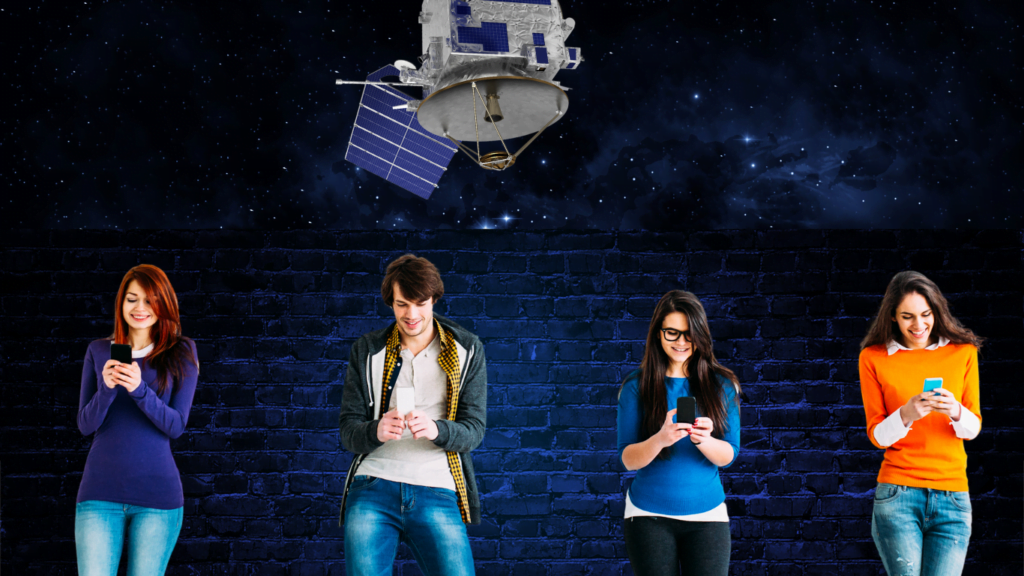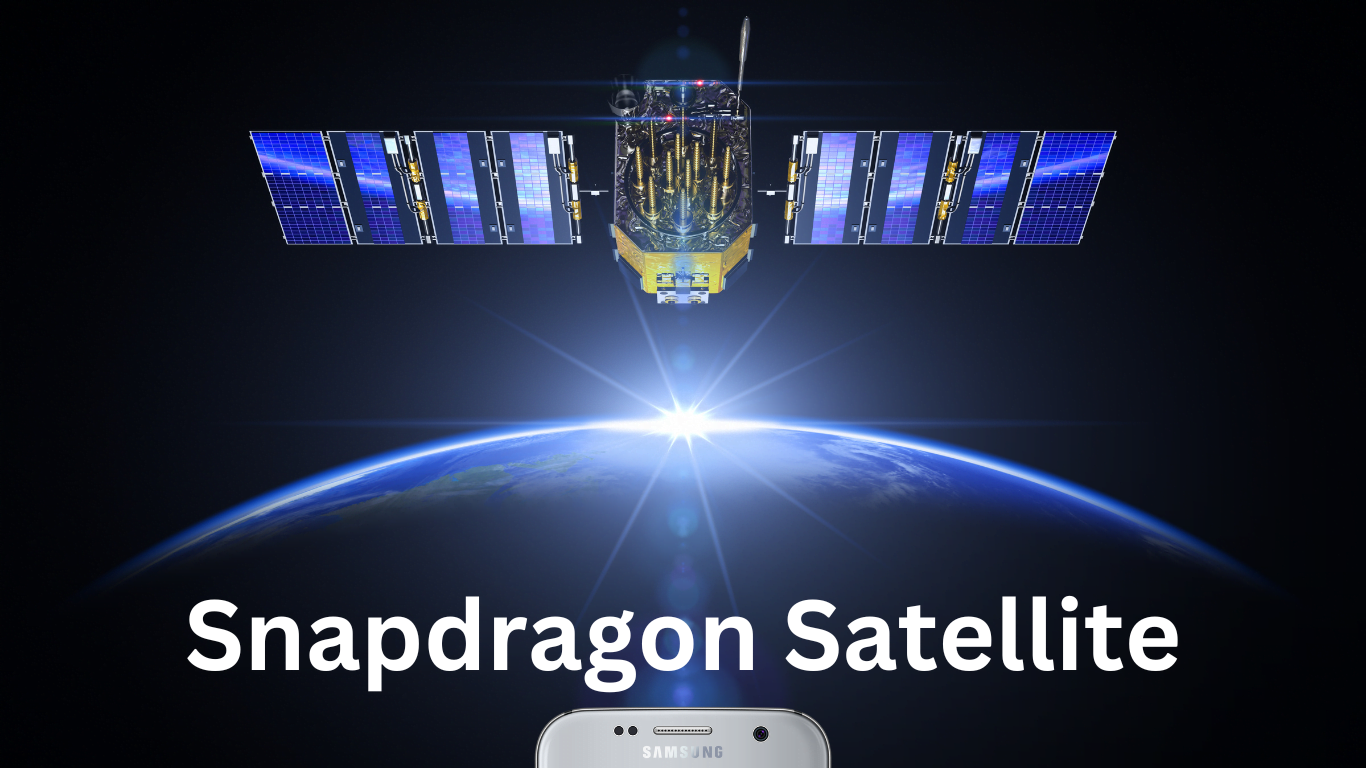- Hot on the Heels of T-Mobile and Apple, Qualcomm Announces “napdragon Satellite”
- So what is Snapdragon Satellite?
- Extending satellite connectivity to Android
- The company says two-way satellite messaging will be available on high-end Android smartphones starting mid-2023.
- The Snapdragon 5G Modem-RF System leverages the Iridium satellite constellation’s weather-resistant L-band spectrum
- T-Mobiles Starlink partnership and its relation to the snapdragon satellite
- How Snapdragon satellite compares to existing satellite phones
Hot on the Heels of T-Mobile and Apple, Qualcomm Announces “napdragon Satellite”
During CES 2023, Qualcomm announced integrating Iridium satellite service into snapdragon processors gen 4 through 8. Though initially light on details of when this functionality would be widely deployed as announcements can have a lagging implementation. Qualcomm wasted no time just a few weeks later. At the mobile world congress, they announced the first phones containing the “8 gen two mobile platform” to get Snapdragon Satellite service. As for now, the service still has not listed a price, but if apple’s implementation is a guide, you could see the first two years covered.
So what is Snapdragon Satellite?
Snapdragon Satellite is a satellite connectivity solution that enables global coverage for OEMs and 5G-enabled smartphones. Qualcomm developed this innovative technology in partnership with Iridium, an established leader in satellite communications. Snapdragon Satellite will allow OEMs to equip their 5G devices with the ability to send and receive messages over the Iridium satellite network. It combines Qualcomm’s Snapdragon 5G modem-RF systems, which are designed to enable 5G connectivity worldwide, with the reliable yet high latency access of the Iridium satellite network when off-network. This combination of technologies allows OEMs to quickly market their 5G devices with reliable off-grid global coverage. With Snapdragon Satellite, OEMs will no longer need to partner with multiple providers or ink their deals like T-Mobile for different regions or countries; one solution can now provide coverage everywhere. Snapdragon Satellite is a revolutionary way for OEMs and device makers to offer users worldwide reliable communication services on their 5G-enabled devices.
Extending satellite connectivity to Android

Android has been stuck in a rut lately regarding satellite communications, as Apple was the first to turn their partnership into a functioning service available to their everyday users. Starting with the latest generation, iPhone 14 users can access emergency SOS functionality when off the grid. Still, the capability of using that service for anything other than SOS was minimal. To provide a better off-grid experience for android smartphones, Quallicom envisioned the ability to send two-way texts and MMS messages using their chipsets. This would only be made possible by creating a modem that can talk to a reliable partner with the bandwidth to enable two-way communication. But that two-way messaging would be slow as its satellite-based geo stationary constellation from Iridium is at a minimum of 600ms to send or receive anything. Sure, that speed is still less than a second, but when people are used to sub 60ms for internet requests, 100 times the magnitude between send and receive is far from ideal.
The company says two-way satellite messaging will be available on high-end Android smartphones starting mid-2023.
It didn’t take long, but android partners Xiaomi, Oppo, Vivo, Motorola, Nothing, and Honor announced they would have Snapdragon Satellite in their smartphones by year’s end. Given that the Satellite modem is built into the chipsets of the flagship SOCs for Quallicom, expect to see Samsung announce Satellite two-way communications soon as well. Expect the Snapdragon 8 gen two mobile devices to get it first, followed by other lower-end chipsets like the snapdragon four as production improves. Android is sure to leverage the two-way messaging capabilities as it offers a distinct advantage over what apple offers which is just emergency satellite communication only.
The Snapdragon 5G Modem-RF System leverages the Iridium satellite constellation’s weather-resistant L-band spectrum
L-band is one of the few frequencies that can punch through dense weather patterns and cloud cover. It is ideal for emergency services to find people out of a coverage area. They can now use the phone in their pocket to send GPS updates on their search for people. Or, at regular intervals, share rescuers’ progress with those trapped, and use their premium smartphones for messaging for help. L-band can punch through dense weather patterns like snow blinds, tornados, or hurricane cloud cover. Using their Android phones, hikers and other outdoor explorers or RV’s on BLM Land who is exploring the unknown can now reach home base with progress updates or to check in that they are safe when out and about.

T-Mobiles Starlink partnership and its relation to the snapdragon satellite
T-mobile was the first to announce that it would partner with Starlink to offer t-mobile service nationwide via Starlink LEO (low earth orbit). Starlink would launch new satellites with T-mobile spectrum frequency built-in and offer T-mobile service in areas where your phone could not connect to a tower. The bandwidth expected at the time was 1-2mbps per cell site of 10sq miles. But the key advantage of partnering with Starlink as opposed to Iridium is that the LEO Satellites offer one big advantage: phone calls. T-mobile is betting that their partnership will allow them to deliver ever-improving data and phone capacity as more and more satellites are put into orbit with T-mobiles frequencies.
Furthermore, Quallicom’s partnership with Iridium does not impact T-mobile plans. They are playing the long game where they can offer nationwide coverage without the additional fees that the Quallicom partnership will be charging by design, as even Apple is not exempt from those constellations charges. Apple will only cover their phone’s satellite emergency functionality for the first two years of charges.
How Snapdragon satellite compares to existing satellite phones
Not too much. Unlike the asteroid that killed the dinosaurs, this partnership with Iridium provides a lifeline to a declining market for satellite phone services. Many airlines have removed their phones on domestic and international flights. Furthermore, most satellite phones are large and bulky and not something a modern tech enthusiast would be caught dead wearing once the second half of 2023 kicks in. Those same tech enthusiasts would now just need one device in their pocket to be able to send a text even when outside their cell phone coverage area. And, by extension, they are much more likely to bring their phone with them when going hiking or engaged in other outdoor activities. To keep up with the latest news, please consider bookmarking our site or subscribing to our YouTube channel.
